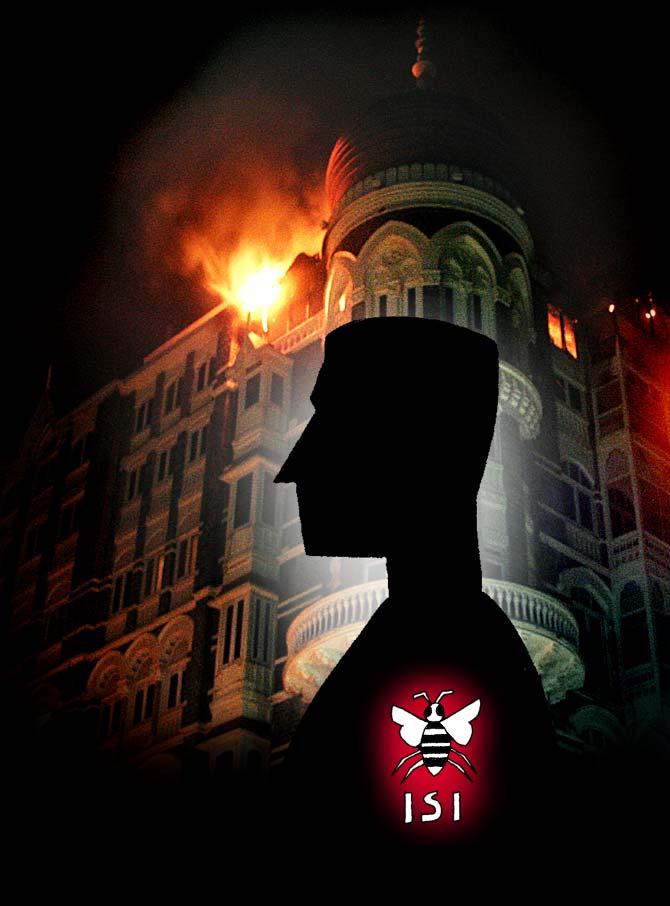 | « Back to article | Print this article |
Exclusive! Who is ISI's Honey Bee in New Delhi?
The ISI's Indian mole Honey Bee helped plan the November 26, 2008, Mumbai terror attacks and there were 10 locals who provided logistical support to David Headley, Adrian Levy tells Rediff.com's Sheela Bhatt in an exclusive interview.
In their sensational book on the 26/11 terror attacks on Mumbai, The Siege: The Attack On The Taj, authors Adrian Levy and Cathy Scott-Clark have claimed that an Indian citizen was a mole for the Inter Services Intelligence, Pakistan's external intelligence agency, and passed on information to it that helped mount the audacious terror attacks on Mumbai on November 26, 2008.
Adrian Levy says the Indian government has not tried hard enough to find the ISI mole in the New Delhi establishment.
Levy, in an exclusive interview to Rediff.com, said he tried hard to detect the identity of this Indian mole, but he is yet to succeed. The authors have dubbed the Indian ISI mole 'Honey Bee' in their book.
They claim that Major Iqbal of the ISI, who was David Coelman Headley's handler in Pakistan, organised a condensed version of the Pakistan army's two-year training course on surveillance and counter-intelligence.
The course was prepared on the basis of the Indian Army's training manual supplied by the Indian mole to the ISI.
Headley, the mastermind behind the Mumbai terror attacks, along with the Lashkar-e-Tayiba, successfully mounted the attack that killed 166 people and wounded hundreds more.
In a sensational claim, the authors write that 'Major Iqbal' had given Headley what is described as 'classic Indian files'. Iqbal boasted that he had obtained these files from the Indian police and army, which 'revealed their training and limitations.'
Levy believes that while the ISI's source in India is unlikely to be from the army, it could be someone from the Indian security establishment other than the army.
Iqbal boasted that they had 'a super agent' at work in New Delhi who was known as Honey Bee.
In addition to Honey Bee, Levy also claims there were people in Mumbai codenamed 'chuhas' (mice) who supplemented information and added to the details Headley provided to the Lashkar to plan the terror attacks in Mumbai.
"The LeT claims there were 10 collaborators working in Mumbai," says Levy.
The Ram Pradhan Commission of Inquiry, set up to probe the terror attacks, failed in its duty when it did not examine the 'local element,' Levy added. "The Pakistan side told me there exists Honey Bee and chuhas. The Indian side should have established their identity."
Levy and Scott-Clark travelled to ten countries on four continents and met hundreds of people to write the book. Levy says they are very sure of their information even though they have not been able to establish the identity of the ISI mole in India.
Unfortunately, in their book, the authors have not been able to establish the actual identities of either 'Abu Qahafa' or 'Major Iqbal', the shadowy ISI handlers behind the terror attacks. The latter played a big role in recruiting the Lashkar's chuhas in India, says Levy.
What then Mumbai police commissioner Abdul Gafoor told the media in 2008 about the local involvement in the terror attacks is correct, Levy added.
Before Headley started his journey to Mumbai to find a landing site for the terrorists, Levy claims that Major Iqbal gave him a bundle of counterfeit Indian rupees and revealed that Honey Bee, the ISI's Indian mole, had told him that Machchimar Nagar, a fishing colony in Cuffe Parade in south Mumbai, could be the landing site for their anti-India mission.
The spot was apparently suggested by the Indian mole as it does not have much of security, and Major Iqbal asked Headley to check it out.
The claim about the existence of the Indian mole Honey Bee, if true, is obviously serious. However, the authors have not offered much evidence about the alleged Indian mole.
It is the Indian manual provided by Honey Bee that became the basis for training Ajmal Kasab and the nine other terrorists who accompanied him to Mumbai almost five years ago. Also, the suggestion of the potential landing spot, one of the crucial pieces of information for the terror attack, came from Honey Bee.
Levy is still hopeful that Honey Bee's identity will be revealed one day.
Illustration: Uttam Ghosh/Rediff.com
